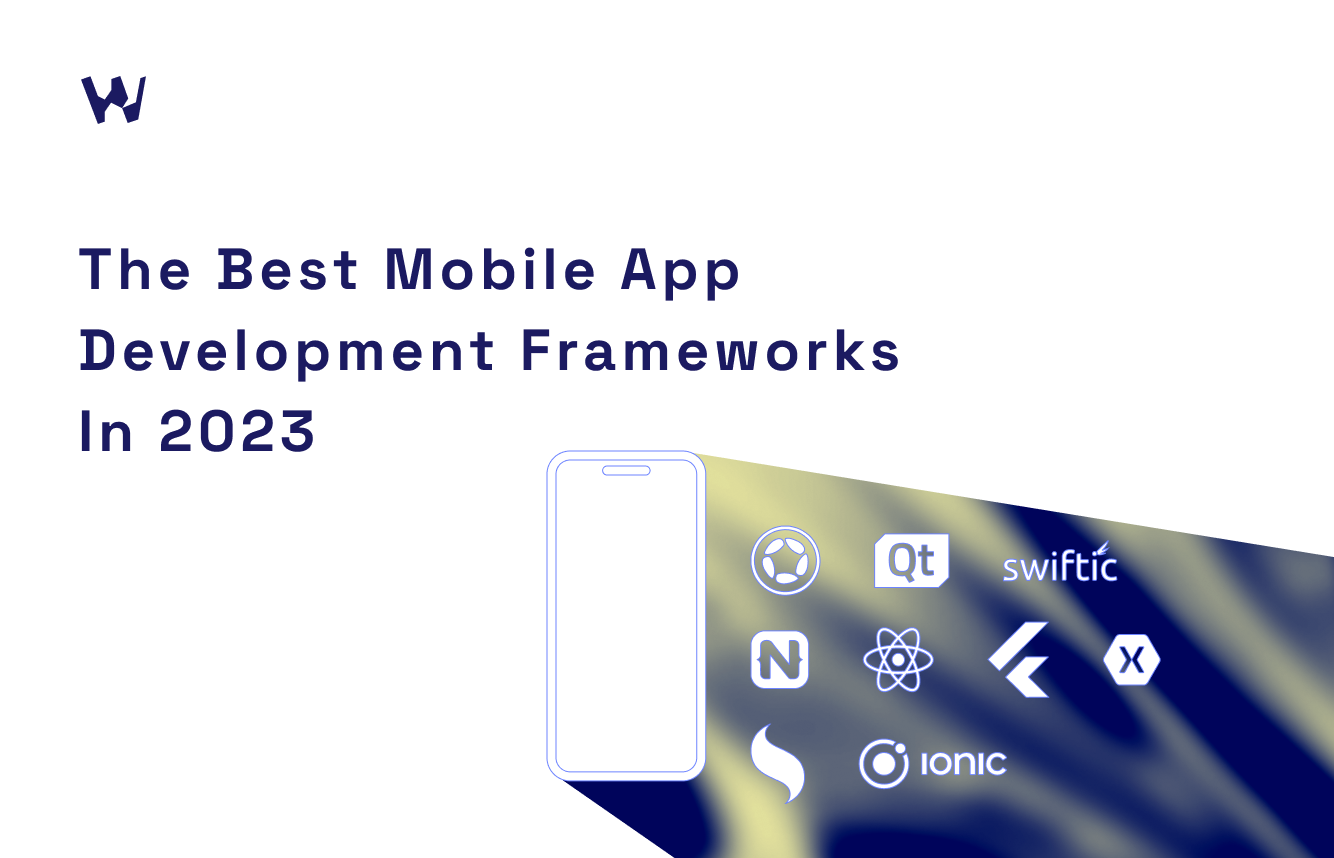The best mobile app development frameworks in late 2023

In today’s digital sprint, going mobile is no longer a luxury – it's a must-have. Mobile apps development has become a crucial cornerstone for enterprises aiming to maintain relevance and edge out the competition.
Harnessing mobile development frameworks can streamline the journey from concept to launch, offering a shortcut to crafting top-notch mobile experiences. Let's dive into the cream of the crop when it comes to mobile app development frameworks you should consider in late 2023.
Mobile App Statistics to Consider
Statista predicts a staggering more than 5 billion smartphone users globally by 2028, amplifying the need for mobile apps development. This boom suggests a goldmine for businesses, with mobile applications expected to generate $935 billion in revenue by the end of this year.
Top Mobile App Development Frameworks in 2023
React Native: A titan in the mobile application development arena, React Native is the go-to for crafting fluid apps for both iOS and Android. Leveraging the React framework, it empowers developers with tools for intricate UI creations and boasts a vast community for support.
Flutter: Google’s Flutter has rapidly become a darling in the app development world, renowned for its speedy deployment and polished outcomes. The hot-reloading feature allows users to see the changes in real-time, without stopping the app, alongside a robust widget library, helping to piece together engaging user interfaces effortlessly.
Ionic: For those looking to hit multiple platforms with a single stone, Ionic’s blend of HTML, CSS, and JavaScript, rooted in Angular, makes it a strong candidate for cross-platform mobile app development.
Xamarin: Backed by Microsoft, Xamarin uses C# and .NET to offer a seamless app development journey, encouraging code reuse across iOS and Android ecosystems, all while underpinning strong community support.
NativeScript: JavaScript or TypeScript aficionados gravitate towards NativeScript for mobile app development that doesn’t compromise on performance or native aesthetics.
PhoneGap: If quick turnaround and minimal coding appeal to you, PhoneGap might be your ally in the mobile development race, with its expansive plugin library adding to its allure.
Corona SDK: Lua is the language of choice for Corona SDK, simplifying the mobile application development process while allowing for quick iterations and ample integration options.
Framework7: Touted for its speed and agility in mobile app development, Framework7 is another HTML, CSS, and JavaScript-based framework that doesn’t skimp on design or functionality.
Swiftic: It has evolved from an exclusively iOS-focused platform to a versatile framework that now caters to native app development for both Android and iOS. This accessibility empowers developers to craft native applications suited to a diverse range of businesses.
Onsen UI: With a treasure trove of customizable components, Onsen UI champions mobile app development that prioritizes both aesthetics and responsiveness.
Sencha Touch: Sencha Touch is a cross-platform framework for mobile development, which uses HTML, CSS, and JavaScript. It offers another flavor of a streamlined app development process, with a rich set of plugins to sweeten the deal for those developing for multiple platforms.
Whether you lean towards React Native, Flutter, Ionic, or Xamarin, each brings unique perks to the table. Delve into each framework's offerings and assess the cost to develop an app that aligns with your aspirations.
Conclusion
Picking the perfect mobile app development framework is vital for creating applications that not only align with your business goals but also captivate your audience.
In the expansive sea of application development frameworks, your choice will hinge on the specific needs of your project. Collaboration with a top mobile development company can clarify which framework fits like a glove for your app’s ambitions.
As the demand for mobile applications skyrockets, investing in the right technology becomes a game-changer for staying on top in the competitive market.